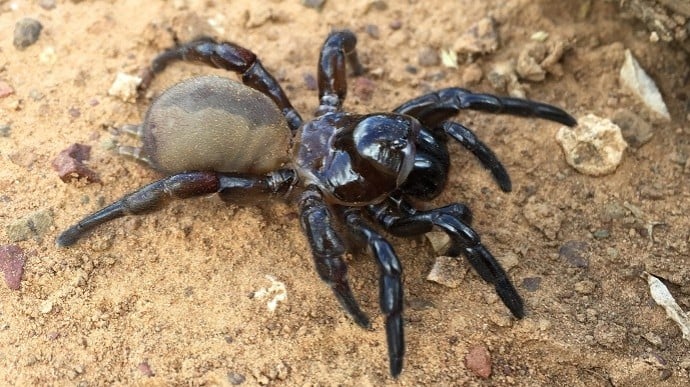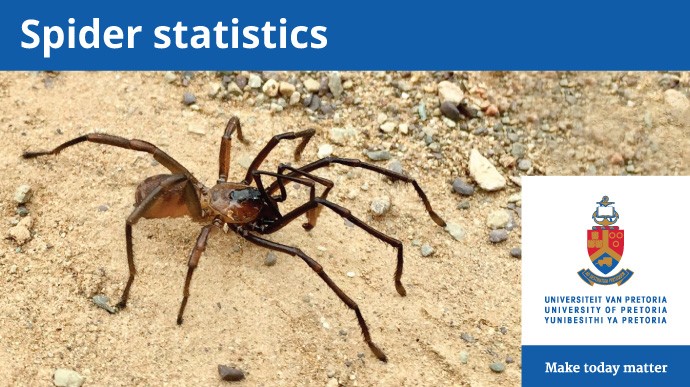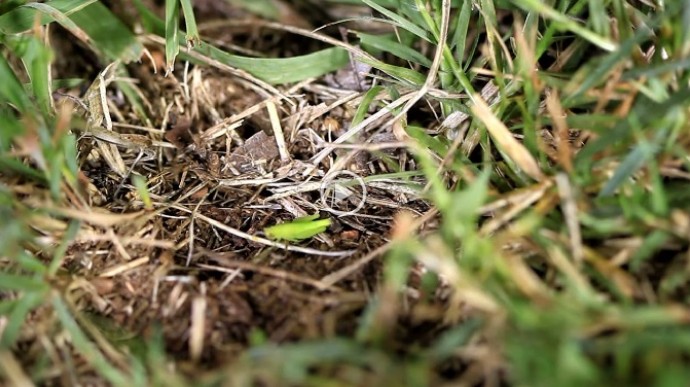Professor Wanda Markotter is a virologist who began her academic career at the University of Pretoria (UP) in 2004 and is currently the Director of its Centre for Viral Zoonoses in the Department of Medical Virology at the University’s Faculty of Health Sciences.
In January 2016, the DSI-NRF South African Research Chairs (SARChI) Initiative awarded her the Chair in Animal Infectious Diseases (Zoonoses). Prof Markotter has been involved in a transdisciplinary research programme on disease ecology in bat species in South Africa and other African countries since 2005. Her research includes extensive fieldwork that focuses on bats and potential spillover hosts, virological testing, bat biology, ecological investigations and human behaviour studies. The focus is not only to detect viruses but to understand the factors involved in spillover and to develop mitigation strategies. More than 40 postgraduate students have graduated under her supervision, and she has mentored several postdoctoral fellows and emerging researchers.
Prof Markotter has published more than 70 scientific publications and several book chapters, and regularly contributes to public media forums. Her research is supported by several multi-collaborative international viral surveillance programmes and institutions, including the Global Disease Detection Programme, the Centres for Disease Control and Prevention, and the Defence and Threat Reduction Agency in the USA. She also plays a leading role in several governmental committees, including the National Rabies Advisory Group and the National One Health Forum.
What got you interested in virology?
Viruses are not considered alive, and are so small, you cannot see them with the naked eye or even with a normal light microscope. You need a special electron microscope. However, they’re responsible for the world deadliest diseases. It has always fascinated me that an organism so small can infect you without you even knowing it happened. It then uses the infected host’s machinery to amplify and cause damage. To understand their mechanisms of action and how to prevent and treat infections is something I want to understand.
What’s the most fascinating thing you’ve learnt about bats?
Bats have adapted to carry deadly viruses without these viruses causing any harm to the animal itself. The “flight as fever” hypothesis states that bats have developed unique mitochondrial and DNA repair pathways – flight leads to higher metabolic rates and higher body temperatures, which the adaptations help the animal to deal with. The same adaptations also assist in controlling viral replication. The higher body temperature simulates a fever that also assists in viral control. Other hosts, like humans, can’t control these viruses when they spillover. However, there isn’t good experimental evidence yet for this theory. More studies on the immune system of bats are now being done, but there is no conclusive evidence on whether they have a unique immune system that assists in controlling these viruses.
What do think COVID-19 has taught the world?
We should never be complacent; emerging novel diseases can be introduced into the human population at any time. There are many reasons for this, but most of them have to do with the pressures on the environment. We are causing these introductions by our actions, and I think COVID-19 has taught us to really think about how we should responsibly interact with our environment and animals. We need to prevent spillover. There will be another disease and another opportunity for spillover. To react only when it is already a disease transmitted between humans is too late and extremely costly, both in human lives and economic impact. It requires a holistic approach among scientists, communities, governments and NGOs focused on developing mitigation strategies that are practical for high-risk communities to prevent spillover.
Many people believe that COVID-19 might be around for quite some time. What does the research around coronaviruses show us?
Time will tell. COVID-19 is a mild disease among a high majority of people, making it difficult to identify infections. This was different for MERS and SARS, which caused severe disease; infected people were then isolated and the spread prevented. This has led to the theory that COVID-19 could become seasonal, like influenza. Several factors might play a role in this, including how long infected people stay immune. If there is only short immunity, in the absence of a vaccine, it’s more likely that we will see annual outbreaks. It will also depend on the degree to which the weather affects the virus; this will become clearer as some countries approach a different season.
Was the global spread of COVID-19 something that you anticipated would happen in our lifetime?
If we look at the history of emerging diseases, it’s something that could have been expected. However, I do not think we anticipated the “when”, “how” and the impact of COVID-19. Previous outbreaks like SARS did not have the global impact that COVID-19 has had, as those outbreaks were more geographically restricted. I never imagined that we would experience a pandemic that involved lockdown for extended periods and us wearing masks for months.
If people have bats on their property, is it something to be concerned about? At what point do bats become pests and how does one safely remove them?
Bats are a very important part of our ecological system and are all around us. Frugivorous bats play a role in seed dispersal and pollination of flowers. Insectivorous bats eat insects including mosquitoes. Removing bats will cause an imbalance in the ecosystem, which will cause other problems. However, it does become a problem if there is contact with their excretions, such as urine and faecal matter. This is typically a problem when they move into the roofs of buildings and populations increase. Bats are protected and you are not allowed to exterminate them. Safe removal will depend on the situation; the best thing to do is to contact a bat interest group for advice (http://batsgauteng.org.za). Also, do not handle bats without the necessary protections, to avoid bites or scratches or any contact with bodily fluids.
How well placed is South Africa to lead research initiatives into coronaviruses like Ebola, SARS, COVID-19 and MERS?
We are well placed to do this sort of research. Historically speaking, South African scientists were leading Ebola and Marburg virus research; this has expanded to include other potential zoonotic viruses, including coronaviruses. Knowing the diversity of pathogens in bats, and when and where they can be transmitted is important. Routes of transmission must be clearly understood; it can be different depending on the virus or it could be seasonal. This is the basic information needed to start with, but this alone will not stop outbreaks. We need to understand contact with people and other animals, and the risk of transmission. This cannot be extrapolated globally and could be geographic specific due to cultural practices and social needs. Being on the African continent with significant expertise and infrastructure enables South African researchers to play a leading role and perform long-term studies that can provide answers on reasons for spillover. We need to go beyond just testing bats for viruses.
We have the expertise to take a transdisciplinary approach. Studying these viruses also requires high biocontainment facilities – UP has biosafety level 3 facilities, and through our collaboration with the National Institute for Communicable Diseases, we also have biosafety level 4 capabilities, the only one in Africa. South Africa is therefore playing a leading role in the African region.
If you are a researcher who would like to work with UP’s CVZ, email Prof Markotter at
[email protected].

 Story
Story
 Infographic
Infographic
 Video
Video
Get Social With Us
Download the UP Mobile App